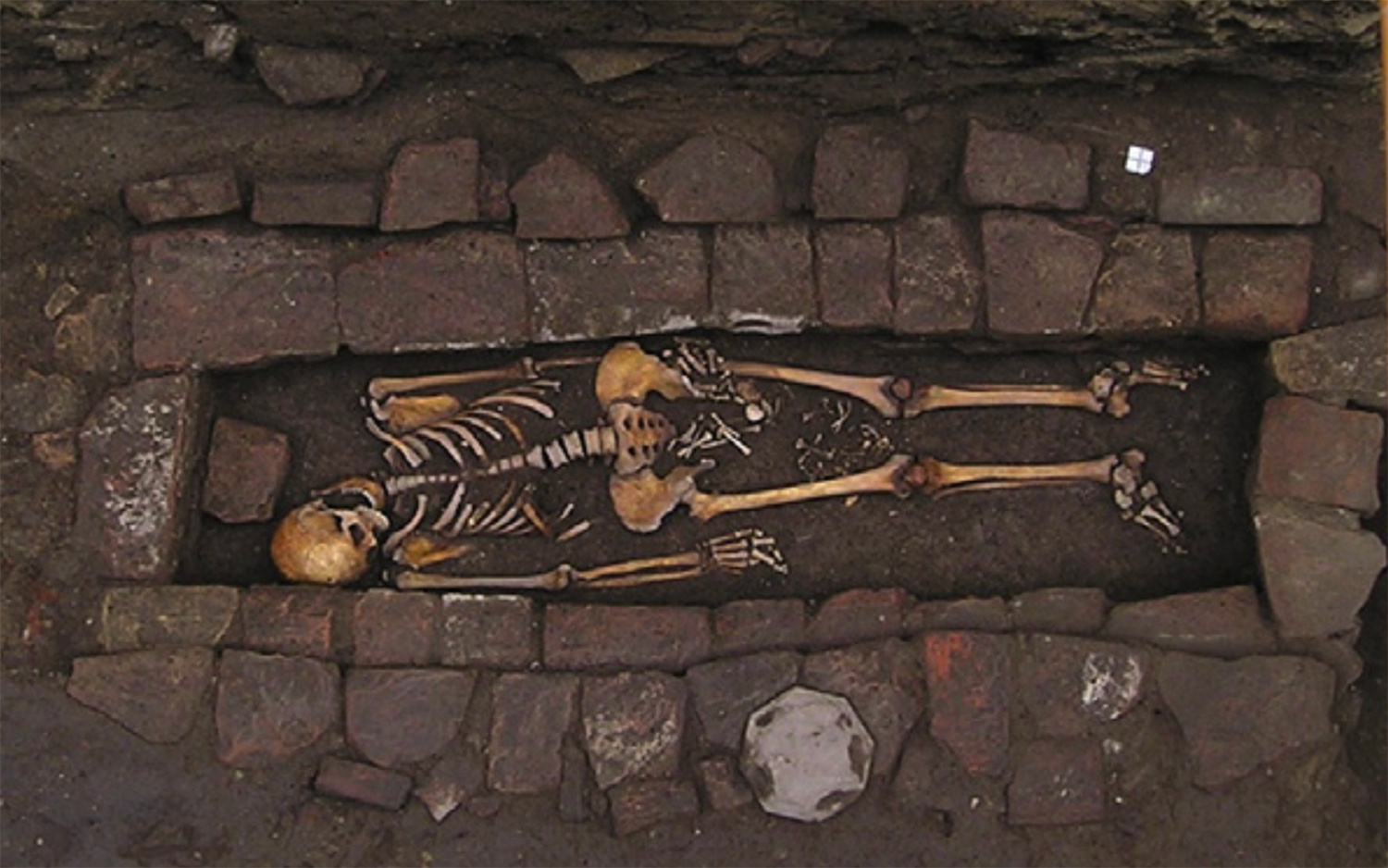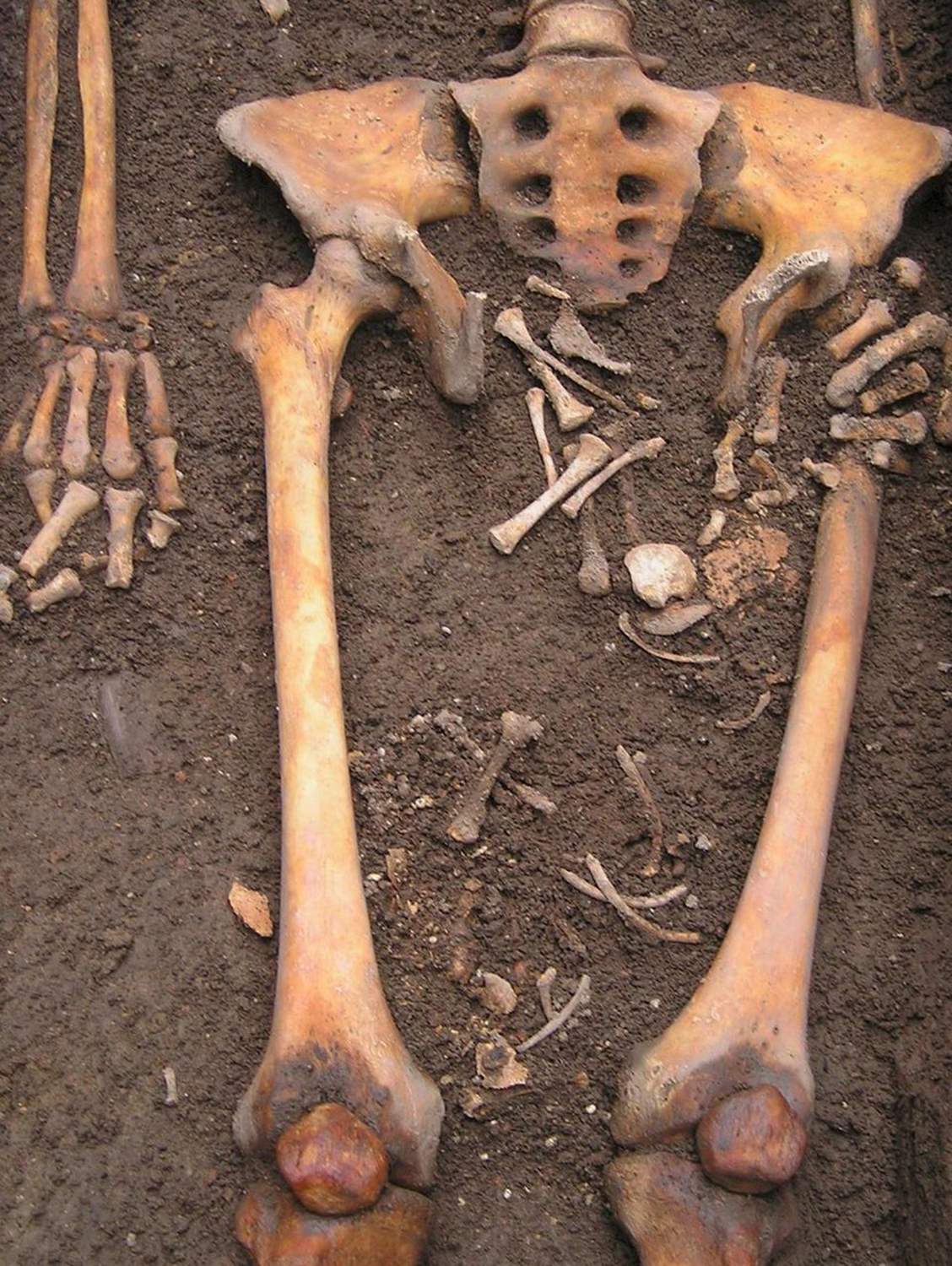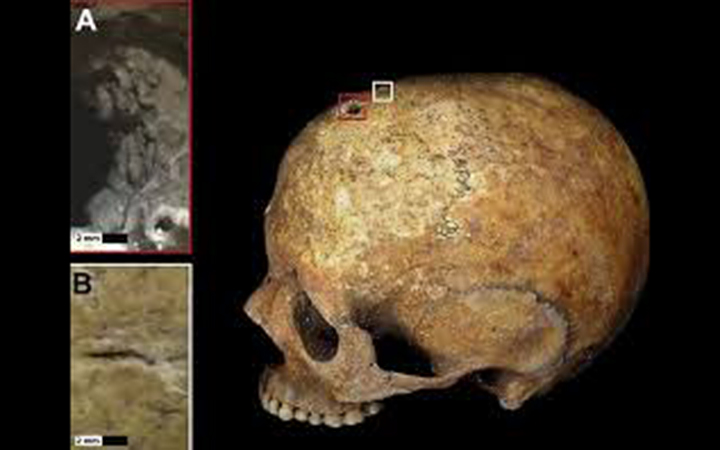This Medieval Mother Had a Gruesome 'Coffin Birth' After Medieval Brain Surgery

In a cramped stone grave beneath the medieval town of Imola, Italy, a 1,300-year-old woman lies dead with a hole in her skull and a fetus between her legs.
The fetus, now just a collection of tiny bones trailing below the mother's skeletal pelvis, was likely delivered in the grave through a phenomenon called "coffin birth" — essentially, when an unborn child is forced out of its mother's womb by posthumous gases after both mother and child have died.
It's a rare sight in archaeology — but rarer still might be the peculiar circular wound bored into the mother's skull. [The 8 Most Grisly Archaeological Studies]
Archaeologists from the University of Ferrara and University of Bologna attempted to unwind the mystery of this mother's and child's deaths in a new study published in the May 2018 issue of the journal World Neurosurgery. According to the researchers, these remarkable skeletal remains may present a rare Middle Ages example of a primitive brain-surgery technique called trepanation. This procedure involved drilling or scraping a hole into the patient's skull to relieve pressure and (theoretically) a whole host of medical ailments. In this case, sadly, that relief may not have been enough.
"Our hypothesis is that the pregnant woman incurred preeclampsia or eclampsia [two pregnancy conditions involving high blood pressure] and she was treated with a frontal trepanation to relieve the intracranial pressure," the researchers wrote in the new paper. "Despite the intervention, she did not survive, and died with the fetus in her womb."

Reading human remains
The grave in question was discovered in 2010, during an excavation of the town of Imola in northern Italy, near the city of Bologna. The skeletal remains of the mother were found among several other burials that researchers dated to the Lombard period (lasting from the 7th to 8th century A.D.). Because the woman's remains were found face-up and surrounded by cut stones, the researchers concluded that she was intentionally buried and likely hadn't been moved or altered (before now).
The woman was likely in her mid-20s to 30s and appeared to be nearing the end of her pregnancy when she was buried. Although the baby's sex was impossible to determine, leg measurements suggested that it was near the 38th week of gestation.
Sign up for the Live Science daily newsletter now
Get the world’s most fascinating discoveries delivered straight to your inbox.
At the top of the woman's skull, researchers detected a small, circular hole measuring 4.6 millimeters (0.2 inches) in diameter — a little smaller than the diameter of a pencil. The puncture was precise and round, suggesting that it didn't result from violence or a single, extreme blow, the researchers wrote. Rather, the wound appeared consistent with repetitive drilling directly into the bone — a hallmark of some trepanation surgeries, the study said.
Because the skull showed early signs of healing near the wound, it was likely that the hole was inflicted at least one week before the woman's death, not posthumously, the scientists said. The researchers also found a linear cut mark a few centimeters above the hole, measuring less than 3 mm (0.12 inches) in length. This, they said, could indicate an area where the scalp was cut or peeled away to prepare the skull for surgery.

A rare cut
The researchers concluded that there was suitable evidence to suggest the wound in the woman's head was caused by a medical procedure similar to trepanation.
Why drill into a pregnant woman's head weeks before she's due? One possible reason was to reduce symptoms related to pregnancy, such as high blood pressure, the researchers said.
"Because trepanation was once often used in the treatment of hypertension to reduce blood pressure in the skull,we theorized that this lesion could be associated with the treatment of a hypertensive pregnancy disorder, such as preeclampsia," the researchers wrote. "This finding is one of the few documented cases of trepanation in the European early Middle Ages, and the only one featuring a pregnant woman in association with a postmortem fetal-extrusion phenomenon."
While trepanation wounds have been documented in more than 1,500 skulls dating to the Neolithic period, this possible example from Middle Ages Italy remains a unique mystery. Further study is required to help answer how and why the surgery was conducted, and why similar examples are so hard to find.
Originally published on Live Science.

Brandon is the space/physics editor at Live Science. His writing has appeared in The Washington Post, Reader's Digest, CBS.com, the Richard Dawkins Foundation website and other outlets. He holds a bachelor's degree in creative writing from the University of Arizona, with minors in journalism and media arts. He enjoys writing most about space, geoscience and the mysteries of the universe.









